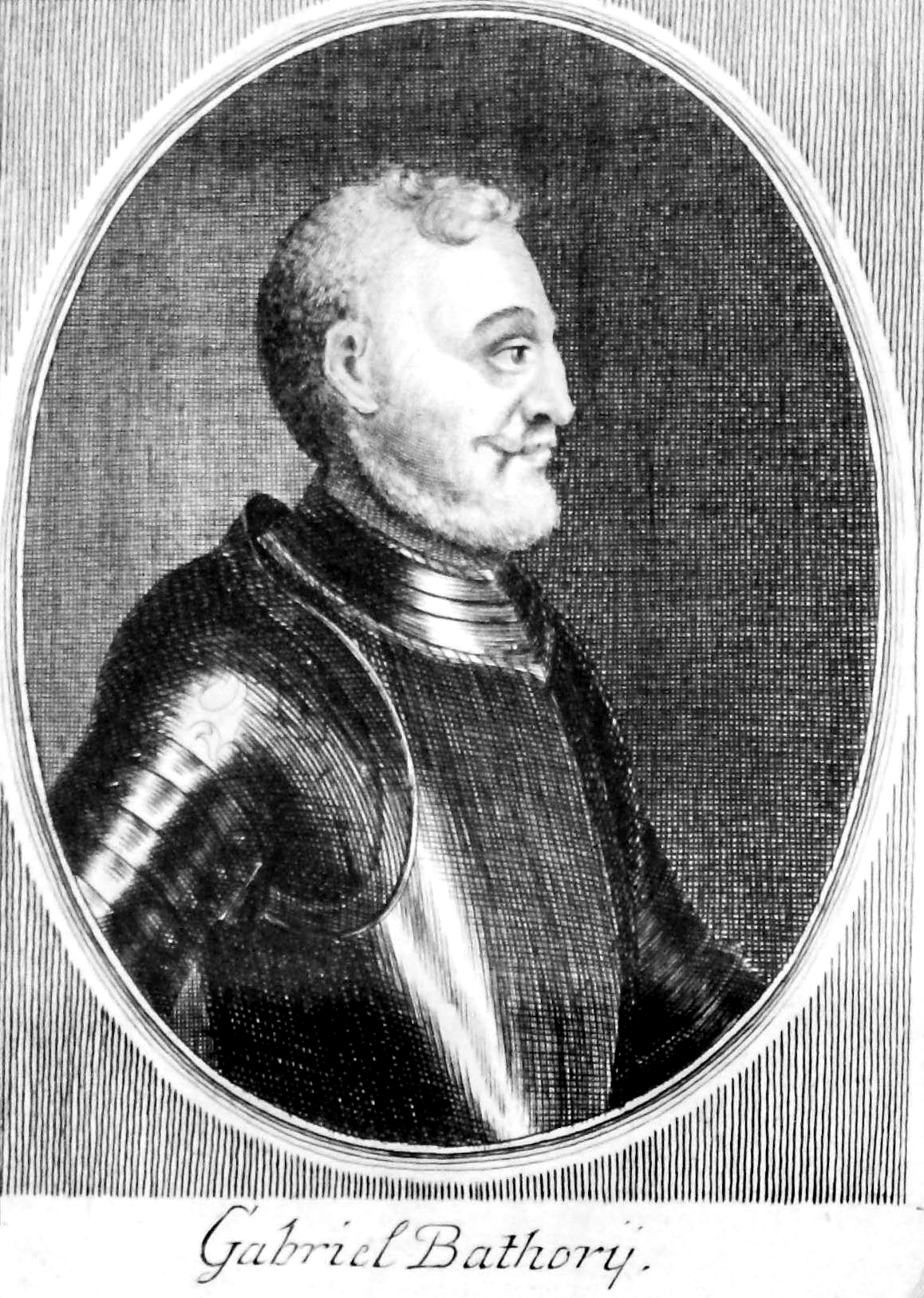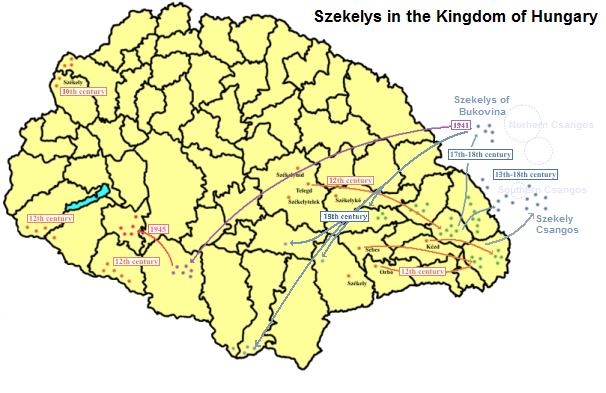|
István Kendi
István Kendi de Szarvaskend (''Kendy''; ? – c. 1628)Markó 2006, p. 112. was a Hungarian noble in the Principality of Transylvania, who served as Chancellor of Transylvania from 31 March 1608 to 20 March 1610. Biography He was the only son of Sándor Kendi, a member of the Transylvanian Royal Council. He had three sisters: Zsuzsanna (wife of Balthasar Báthory), Krisztina (second wife of Farkas Kovacsóczy) and Zsófia. His father was executed without any trial by Prince Sigismund Báthory in 1594. He regained his father's confiscated estates and property in October 1600. István Kendi married twice: his first wife was Zsuzsanna Csapy, stepdaughter of Prince Sigismund Rákóczi, the second one was Anna Horváth de Palocsa since 1618. He had a daughter. Career After his father's death, he functioned as Lord Lieutenant (Count; ''comes'') of Doboka County since 1595. He participated in the uprising of Mózes Székely in 1603 and was captured by General Giorgio Basta ... [...More Info...] [...Related Items...] OR: [Wikipedia] [Google] [Baidu] |
Hungary
Hungary ( hu, Magyarország ) is a landlocked country in Central Europe. Spanning of the Carpathian Basin, it is bordered by Slovakia to the north, Ukraine to the northeast, Romania to the east and southeast, Serbia to the south, Croatia and Slovenia to the southwest, and Austria to the west. Hungary has a population of nearly 9 million, mostly ethnic Hungarians and a significant Romani minority. Hungarian, the official language, is the world's most widely spoken Uralic language and among the few non- Indo-European languages widely spoken in Europe. Budapest is the country's capital and largest city; other major urban areas include Debrecen, Szeged, Miskolc, Pécs, and Győr. The territory of present-day Hungary has for centuries been a crossroads for various peoples, including Celts, Romans, Germanic tribes, Huns, West Slavs and the Avars. The foundation of the Hungarian state was established in the late 9th century AD with the conquest of the Carpat ... [...More Info...] [...Related Items...] OR: [Wikipedia] [Google] [Baidu] |
Giorgio Basta
Giorgio Basta, Count of Huszt, Gjergj Basta or Gheorghe Basta (1550 – 1607) was an Italian general, diplomat, and writer of Arbëreshë origin, employed by the Holy Roman Emperor Rudolf II to command Habsburg forces in the Long War of 1591–1606. He was later sent to administer Transylvania as an Imperial vassal and to restore Catholicism as the dominant religion in the region. On his orders, his ally Michael the Brave, who ruled Transylvania, Wallachia, and Moldavia, was assassinated on 9 August 1601, a few days after the common victory at the Battle of Guruslău, for trying to turn against Rudolf II. For this, he is often depicted as disloyal and violent by Romanian and Hungarian historians. Basta was also the author of books on the art of military leadership. Biography Basta was born to an Arbëreshë family. He is claimed to be born in La Rocca, modern day Roccaforzata, a village in Salento, Italy, however historical sources claim he was born in Rocca sul Tanaro, ... [...More Info...] [...Related Items...] OR: [Wikipedia] [Google] [Baidu] |
Hungarian Soldiers
Hungarian may refer to: * Hungary, a country in Central Europe * Kingdom of Hungary, state of Hungary, existing between 1000 and 1946 * Hungarians, ethnic groups in Hungary * Hungarian algorithm, a polynomial time algorithm for solving the assignment problem * Hungarian language, a Finno-Ugric language spoken in Hungary and all neighbouring countries * Hungarian notation, a naming convention in computer programming * Hungarian cuisine Hungarian or Magyar cuisine is the cuisine characteristic of the nation of Hungary and its primary ethnic group, the Magyars. Traditional Hungarian dishes are primarily based on meats, seasonal vegetables, fruits, bread, and dairy products. ..., the cuisine of Hungary and the Hungarians See also * * {{disambiguation Language and nationality disambiguation pages ... [...More Info...] [...Related Items...] OR: [Wikipedia] [Google] [Baidu] |
Gabriel Bethlen
Gabriel Bethlen ( hu, Bethlen Gábor; 15 November 1580 – 15 November 1629) was Prince of Transylvania from 1613 to 1629 and Duke of Opole from 1622 to 1625. He was also King-elect of Hungary from 1620 to 1621, but he never took control of the whole kingdom. Bethlen, supported by the Ottomans, led his Calvinist principality against the Habsburgs and their Catholic allies. Early life Gabriel was the elder of the two sons of Farkas Bethlen de Iktár and Druzsiána Lázár de Szárhegy. Gabriel was born in his father's estate, Marosillye (now Ilia in Romania), on 15 November 1580. Farkas Bethlen was a Hungarian nobleman who lost his ancestral estate, Iktár (now Ictar-Budinț in Romania), due to the Ottoman occupation of the central territories of the Kingdom of Hungary. Stephen Báthory, Prince of Transylvania, granted Marosillye to him and made him captain-general of the principality. Druzsiána Lázár was descended from a Székely noble family. Both Farkas Bethlen ... [...More Info...] [...Related Items...] OR: [Wikipedia] [Google] [Baidu] |
Košice
Košice ( , ; german: Kaschau ; hu, Kassa ; pl, Коszyce) is the largest city in eastern Slovakia. It is situated on the river Hornád at the eastern reaches of the Slovak Ore Mountains, near the border with Hungary. With a population of approximately 230,000, Košice is the second-largest city in Slovakia, after the capital Bratislava. Being the economic and cultural centre of eastern Slovakia, Košice is the seat of the Košice Region and Košice Self-governing Region, and is home to the Slovak Constitutional Court, three universities, various dioceses, and many museums, galleries, and theatres. In 2013 Košice was the European Capital of Culture, together with Marseille, France. Košice is an important industrial centre of Slovakia, and the U.S. Steel Košice steel mill is the largest employer in the city. The town has extensive railway connections and an international airport. The city has a preserved historical centre which is the largest among Slovak towns. There ... [...More Info...] [...Related Items...] OR: [Wikipedia] [Google] [Baidu] |
Trial In Absentia
Trial in absentia is a criminal proceeding in a court of law in which the person who is subject to it is not physically present at those proceedings. is Latin for "in (the) absence". Its meaning varies by jurisdiction and legal system. In common law legal systems, the phrase is more than a spatial description. In these systems, it suggests a recognition of a violation to a defendant's right to be present in court proceedings in a criminal trial. Conviction in a trial in which a defendant is not present to answer the charges is held to be a violation of natural justice. Specifically, it violates the second principle of natural justice, (hear the other party). In some civil law legal systems, such as that of Italy, is a recognized and accepted defensive strategy. Such trials may require the presence of the defendant's lawyer, depending on the country. Europe Member states of the Council of Europe that are party to the European Convention on Human Rights are bound to adher ... [...More Info...] [...Related Items...] OR: [Wikipedia] [Google] [Baidu] |
Kingdom Of Hungary (1538–1867)
The Kingdom of Hungary was a monarchy in Central Europe that existed for nearly a millennium, from the Middle Ages into the 20th century. The Principality of Hungary emerged as a Christian kingdom upon the coronation of the first king Stephen I at Esztergom around the year 1000;Kristó Gyula – Barta János – Gergely Jenő: Magyarország története előidőktől 2000-ig (History of Hungary from the prehistory to 2000), Pannonica Kiadó, Budapest, 2002, , p. 687, pp. 37, pp. 113 ("Magyarország a 12. század második felére jelentős európai tényezővé, középhatalommá vált."/"By the 12th century Hungary became an important European factor, became a middle power.", "A Nyugat részévé vált Magyarország.../Hungary became part of the West"), pp. 616–644 his family (the Árpád dynasty) led the monarchy for 300 years. By the 12th century, the kingdom became a European middle power within the Western world. Due to the Ottoman occupation of the central and sout ... [...More Info...] [...Related Items...] OR: [Wikipedia] [Google] [Baidu] |
Sic, Cluj
Sic ( hu, Szék; german: Secken) is a commune in Cluj County, Transylvania, Romania. It is composed of a single village, Sic. A former salt-mining town, the commune is located in the eastern part of the county, in the Transylvanian Plain, south of Gherla and northeast of the county seat, Cluj-Napoca. Demography At the 2011 census, 93.8% of inhabitants were Hungarians, 3.6% Romanians and 0.4% Roma. At the 2002 census, 75% were Hungarian Reformed, 10% Seventh Day Adventists, 6.6% Roman Catholics and 3.7% Romanian Orthodox The Romanian Orthodox Church (ROC; ro, Biserica Ortodoxă Română, ), or Patriarchate of Romania, is an autocephalous Eastern Orthodox church in full communion with other Eastern Orthodox Christian churches, and one of the nine patriarchate .... Natives * György Aranka References *''Atlasul localităților județului Cluj'' (Cluj County Localities Atlas), Suncart Publishing House, Cluj-Napoca, Sic, Cluj Localities in Transylvania Mining co ... [...More Info...] [...Related Items...] OR: [Wikipedia] [Google] [Baidu] |
Székelys
The Székelys (, Székely runes: 𐳥𐳋𐳓𐳉𐳗), also referred to as Szeklers,; ro, secui; german: Szekler; la, Siculi; sr, Секељи, Sekelji; sk, Sikuli are a Hungarian subgroup living mostly in the Székely Land in Romania. A significant population descending from the Székelys of Bukovina lives in Tolna and Baranya counties in Hungary and certain districts of Vojvodina, Serbia. In the Middle Ages, the Székelys played a role in the defense of the Kingdom of Hungary against the Ottomans in their posture as guards of the eastern border. With the Treaty of Trianon of 1920, Transylvania (including the Székely Land) became part of Romania, and the Székely population was a target of Romanianization efforts. In 1952, during the communist rule of Romania, the former counties with the highest concentration of Székely population – Mureș, Odorhei, Ciuc, and Trei Scaune – were legally designated as the Magyar Autonomous Region. It was superseded in ... [...More Info...] [...Related Items...] OR: [Wikipedia] [Google] [Baidu] |
Brașov
Brașov (, , ; german: Kronstadt; hu, Brassó; la, Corona; Transylvanian Saxon: ''Kruhnen'') is a city in Transylvania, Romania and the administrative centre of Brașov County. According to the latest Romanian census ( 2011), Brașov has a population of 253,200 making it the 7th most populous city in Romania. The metropolitan area is home to 382,896 residents. Brașov is located in the central part of the country, about north of Bucharest and from the Black Sea. It is surrounded by the Southern Carpathians and is part of the historical region of Transylvania. Historically, the city was the center of the Burzenland, once dominated by the Transylvanian Saxons, and a significant commercial hub on the trade roads between Austria (then Archduchy of Austria, within the Habsburg monarchy, and subsequently Austrian Empire) and Turkey (then Ottoman Empire). It is also where the national anthem of Romania was first sung. Names Brassovia, Brassó, Brașov, etc. According to Drago ... [...More Info...] [...Related Items...] OR: [Wikipedia] [Google] [Baidu] |



